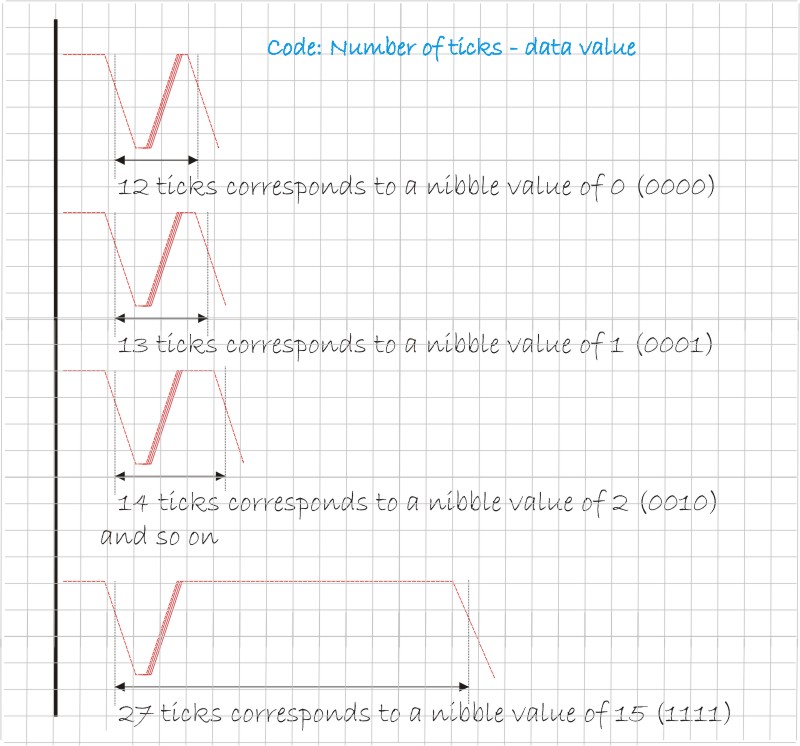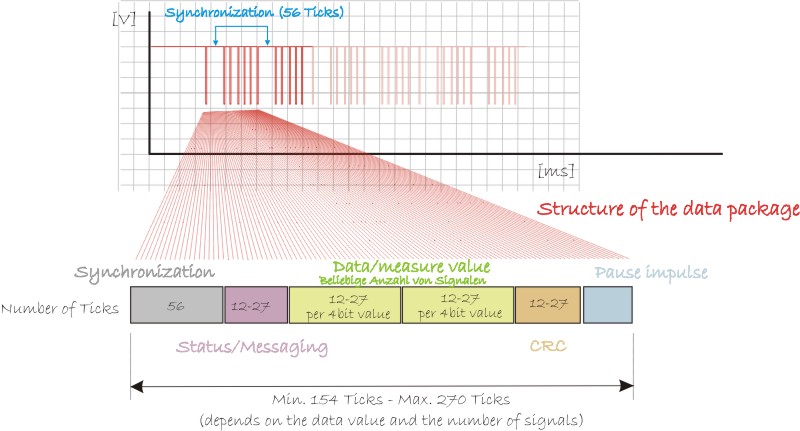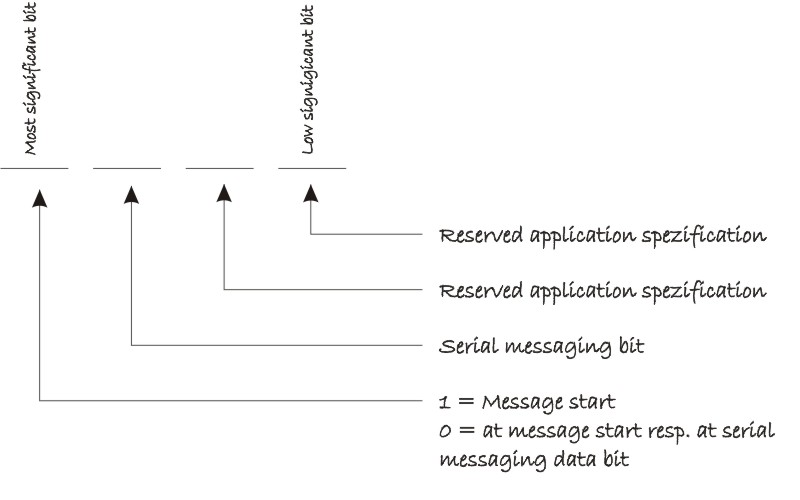

The SENT-Simulyzer is predominantly developed for SENT-BUS-Communication, but can also used for Inifineon SPC-Standard.
The bus standard SENT is designed for high-resolution data transmission between a sensor and an ECU.
It´s a question of unidirectional communication schema. The data transmission is clocked in time units called ticks.
Each tick can be defined between 3 µs and 90 µs.
The ECU sends a defined, 56 ticks long, cyclical synchronous impulse, which marks at any one time the start of an data transmission cycle.
The sensor data value, concludes at minimum one or more signal values, are defined in time intervals called Nibbles.

The time measurement results of 2 falling slopes of an voltage change from Vhigh nach VLow, counted in number of ticks x time unit in µs.
After the first falling slope is identified, the voltage change have to be on Low-Level for 4 ticks at minimum.
After that, the voltage change to High-Level is variable, but within the number of ticks of the desired transmission value.
One nibble has 4 bits, that means a transmission value between 0 and 15. The following table shows the conversion of the ticks and the data value:
|
Ticks between |
data value |
Time between 2 falling slopes |
Minimal |
Maximal by 90 µs |
|
12 |
0000 |
12 x time unitin µs |
36µs |
1080µs |
|
13 |
0001 |
13 x time unit in µs |
39µs |
1170µs |
|
14 |
0010 |
14 x time unit in µs |
42µs |
1260µs |
|
15 |
0011 |
15 x time unit in µs |
45µs |
1350µs |
|
16 |
0100 |
16 x time unit in µs |
48µs |
1440µs |
|
17 |
0101 |
17 x time unit in µs |
51µs |
1530µs |
|
18 |
0110 |
18 x time unit in µs |
54µs |
1620µs |
|
19 |
0111 |
19 x time unit in µs |
57µs |
1710µs |
|
20 |
1000 |
20 x time unit in µs |
60µs |
1800µs |
|
21 |
1001 |
21 x time unit in µs |
63µs |
1890µs |
|
22 |
1010 |
22 x time unit in µs |
66µs |
1970µs |
|
23 |
1011 |
23 x time unit in µs |
69µs |
2060µs |
|
24 |
1100 |
24 x time unit in µs |
72µs |
2150µs |
|
25 |
1101 |
25 x time unit in µs |
75µs |
2240µs |
|
26 |
1110 |
26 x time unit in µs |
78µs |
2330µs |
|
27 |
1111 |
27 x time unit in µs |
81µs |
2420µs |
A data frame includes the following data sections:

| Data section | Description | Minimal | Maximal |
| Synchronization | The synchronization impulse defines the beginning of a data transmission and is fixed to 56 ticks. That means the ECU notice a new data frame after the recognition of an time lap of 56 ticks between to falling slopes. The low impulse is variable, but have to be 4 clock ticks at minimum. |
56 x 3µs=168 µs | 56 x 90 µs=5040µs |
| Status/Messaging | Reserved status section with a length of 4 bits at minimum respectively 1 Nibble (12 - 27 Ticks). Thereby the bit positions are defined as follows:  The data section includes the Serial Messaging.  The status section is not included to the CRC error detection eingeschlossen. |
12x3µs=36µs | 27x90µs=2430µs |
| Signal value | The data transmission value coded in nibbles depending on the length of the according signal. After each transmitted nibble a low impulse with at minimum 4 ticks length have to be carried out. The data transmission is limited by the maximum data frame length of 270 ticks less 4 ticks status section an less the optional use of the CRC section. |
12 Ticks x 3µs = 36 µs 1 signal value 0 |
202 Ticks x 90 µs = 18180µs without CRC and with status data value 0 |
| CRC | Optional 4-bit CRC error detection of the data value. The status section is not included to the CRC error detection. |
12 Ticks x 3µs = 36 µs at CRC-value 0 |
27 Ticks x 90µs = 2430 µs at CRC-value15 |
| Pause impulse | To get a constant data transmission length, pause impulse can be included to fill the failure time laps because of different transmission time at different data values. The number of pause impulse results from: Desired constant data transmission time/ clock rate = Number of available ticks Pause impulse = Number of available ticks - 56 ticks synchronization - status bits - data value- CRC. |
12 Ticks x 3µs = 36 µs
|
768 (3x256)ticks x 90µs = 69120 µs = 69 ms
|
You can get more detailed information at the actual SENT specification (SAEinternational)